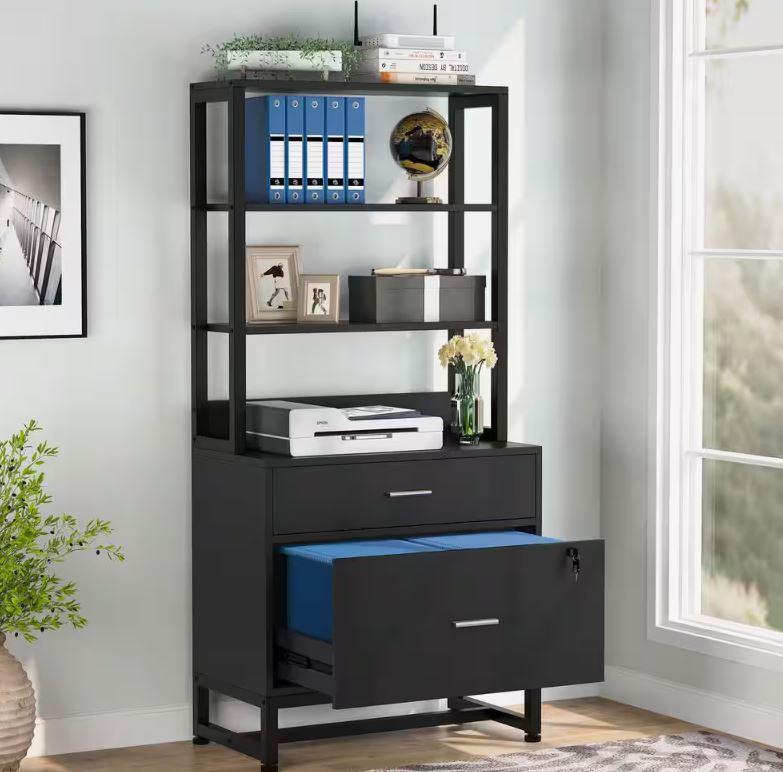Practicality of a Vertical Cabinet in Modern Offices

In today’s fast-paced and space-conscious workplaces, staying organized is no longer a luxury—it’s a necessity. Whether you're managing sensitive paperwork, employee files, or just general office clutter, storage solutions like the vertical cabinet have become essential components of any productive work environment. Unlike horizontal storage units or open shelves, vertical cabinets offer a tall, narrow design that maximizes space without compromising on accessibility. Their space-efficient layout allows office planners to make full use of limited floor areas, especially in compact offices, home workspaces, and co-working environments. With the increasing shift towards digitization, one might assume that traditional filing cabinets are obsolete. However, vertical cabinets have evolved. Many are now integrated with smart locking systems, modular designs, and durable materials, making them relevant for the modern era.
The Structural Advantage of Vertical Cabinets
When considering file storage options, one of the primary decisions to make is whether to go with vertical or lateral cabinets. The vertical cabinet is distinguished by its upright structure and multi-drawer format, which is ideal for storing letter-size documents in a compact footprint. This vertical orientation is particularly beneficial for offices with limited horizontal space but plenty of ceiling height. Most vertical cabinets feature deep drawers that slide out smoothly, offering easy access to documents stored in front-to-back order. This orientation supports high-capacity filing in a small area, which is particularly useful in law firms, government offices, and educational institutions. Additionally, vertical cabinets typically come with anti-tip mechanisms and lockable drawers to ensure safety and privacy.
Enhancing Workplace Productivity with Organized Filing
Clutter can drastically reduce workplace efficiency, leading to misplaced files, delayed workflows, and reduced focus. By integrating a vertical cabinet into your office layout, you can create designated spaces for storing categorized files, legal documents, stationery, or even personal belongings. Proper organization not only simplifies document retrieval but also boosts employee morale and productivity. A neat and well-maintained office environment reflects professionalism and discipline, especially important during client visits or meetings. Vertical cabinets are also incredibly versatile, suitable for storing items beyond just files. They can be used to house office supplies, printer paper, reference materials, and archived paperwork—all while maintaining a sleek and uniform appearance.
Vertical Cabinets and Office Aesthetics
Modern office furniture is no longer purely functional; it also plays a significant role in aesthetics and branding. Today’s vertical cabinets are designed with a blend of utility and style in mind. Available in materials like steel, wood laminate, or thermoplastic, these cabinets come in various colors and finishes to match your office’s design theme. From matte black and white to textured wood-grain finishes, there's a vertical cabinet to complement every workspace. A cohesive and well-planned office layout, complete with matching storage units, helps in creating a visually appealing work environment. This not only impresses visitors but also fosters a sense of pride among employees. Some vertical cabinets even offer customizable labeling systems or color-coded drawers, helping teams maintain a clean, visually organized space.
Factors to Consider Before Purchasing a Vertical Cabinet
When shopping for a vertical cabinet, it’s important to evaluate your specific storage needs. Start by assessing the volume of paperwork you need to store. Choose between two-drawer, three-drawer, or four-drawer models based on this requirement. Consider the build quality—steel cabinets tend to be more durable and are often used in high-traffic or industrial settings. Wooden cabinets offer aesthetic appeal and are better suited for executive offices or front-desk areas. Locking mechanisms are another essential feature, especially when storing sensitive or confidential information. Choose cabinets that provide either centralized locking systems or individual drawer locks. Smooth gliding rails and ball-bearing slides ensure ease of access, while anti-tilt features prevent the cabinet from toppling when multiple drawers are open. If mobility is a concern, opt for vertical cabinets with wheels or casters, allowing you to reposition them as needed without hassle.
Vertical Cabinets in Home Office Setups
As remote work continues to rise, home offices are becoming increasingly prevalent. For these spaces, a vertical cabinet can serve as a compact and stylish storage solution that doesn’t overpower the room. In smaller apartments or houses, space is at a premium, and a vertical storage unit can make the difference between a cluttered and a productive workspace. Home users often appreciate vertical cabinets with lockable drawers for securing personal files, bills, or medical records. Look for models that fit under desks or next to bookshelves to maintain a streamlined home office layout. Some cabinets are also designed to double as side tables or printer stands, adding extra functionality to the unit.
Sustainability and Long-Term Use
As businesses become more environmentally conscious, sustainability in office furniture has gained importance. A well-constructed vertical cabinet can last for years, reducing the need for frequent replacements and minimizing waste. Steel and recycled aluminum versions offer durability and eco-friendliness. Additionally, vertical cabinets with modular designs allow businesses to adapt their storage units as needs evolve, rather than disposing of old furniture. Reputable manufacturers often offer extended warranties, repair options, and end-of-life recycling programs, contributing to sustainable office practices. The long-term cost-effectiveness of a vertical cabinet makes it a wise investment for businesses focused on both budget and environmental impact.
Customization Options for Industry-Specific Needs
Different industries have varying filing and storage requirements. In healthcare settings, vertical cabinets often store patient records and medical forms. In law offices, they hold legal briefs and case files. Education sectors use them for student records, syllabi, and administrative paperwork. Because of this, many vertical cabinet models offer industry-specific customization options. These include fire-resistant materials, high-security locks, adjustable filing rails for legal or letter-size paper, and even biometric access systems. Investing in a cabinet tailored to your field ensures maximum utility and compliance with data protection regulations.
Conclusion: Why a Vertical Cabinet Is a Smart Choice
From compact design to robust functionality, the vertical cabinet continues to be a top choice for office and home storage needs. Whether you run a busy law firm, manage a school, or work from a small apartment, vertical cabinets offer a blend of form, function, and flexibility. With a wide array of features and styles, there's a vertical cabinet to fit every workflow and design aesthetic. For anyone looking to optimize their workspace without compromising on storage capacity, a vertical cabinet is the solution. And when it comes to reliable office storage solutions, Filing cabinets remains a trusted name in delivering quality, style, and innovation to meet the evolving demands of modern professionals.




